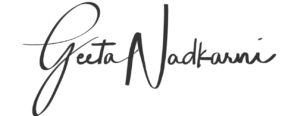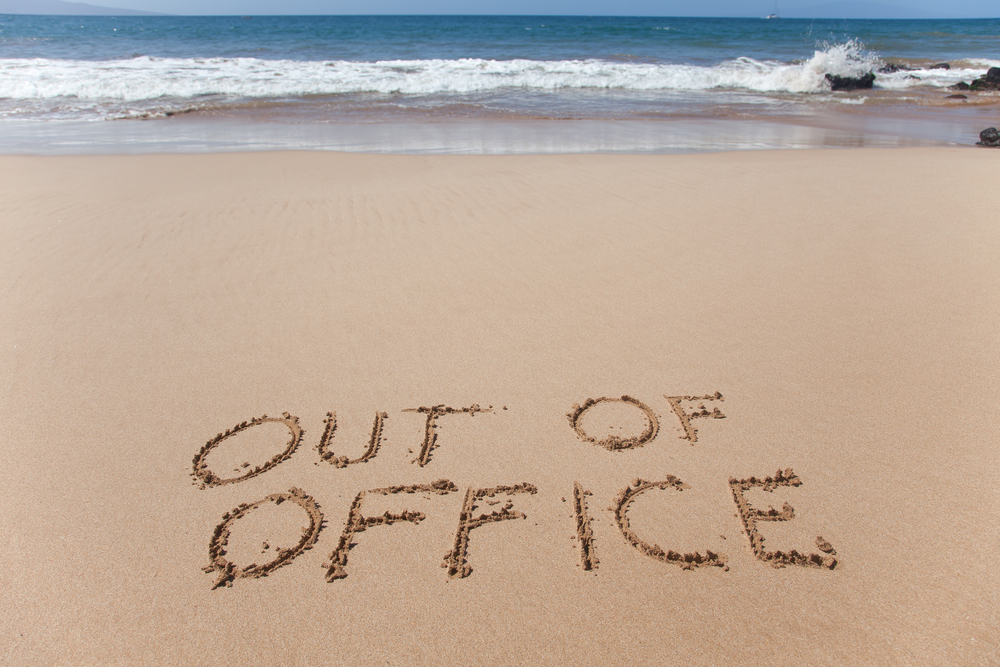I used to hate re-reading my old journals and often threw them out unread.
But in recent years this has completely shifted and I actually find revisiting old entries both pleasurable and productive, in that I learn a ton from doing it.
I realized this was because I’d made some small but significant changes to the way I journaled, and it made the reflection aspect less cringey.
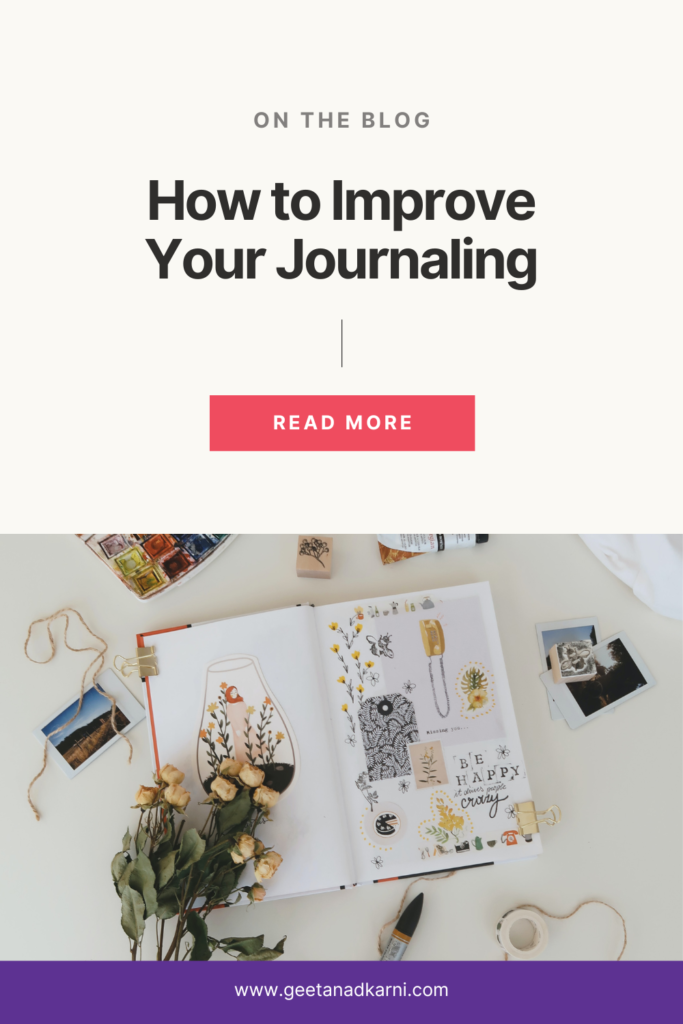
- I wrote narratively about hard things:
I wrote about things in order as much as possible. I wrote them out step-by-step – where the problem started, what were the incidents and actions that followed that led to the current situation. There is hard science that proves that taking a “rearview mirror” approach to problem solving actually helps us create the futures we want more than creative visualization does.
Creative visualization has its place, but it’s best used as a tool to set the horizon or direction we want to move towards. The best predictor of our success is our examination of what has brought us this far, so we can base our next steps on actual facts and data (this includes not just numbers like revenue but behaviours, drama, emotions, etc).
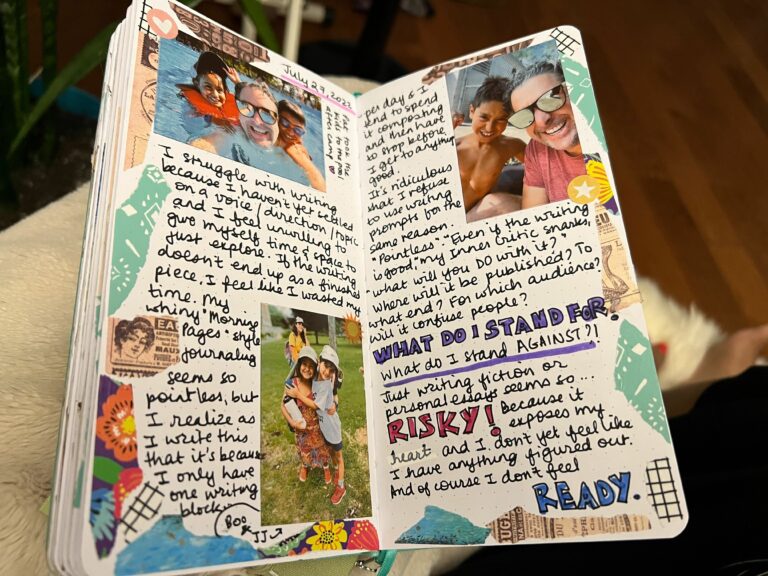
Once I started writing in this fashion, I found it made not just the writing super interesting and productive in the present, but the process of re-reading afterwards deepened my self knowledge. It gave me increased clarity on exactly what was going on and what I could do to be my own best friend.
As Chip and Dan Heath say on page 212 of their book Made to Stick:
Maybe financial gurus shouldn’t be telling us to imagine that we’re filthy rich; instead, they should be telling us to replay the steps that led to our being poor.
The thing that I turn to journaling the most is for “insight” – to understand my life and my own motivations better. Writing narratively and looking in the “rearview mirror” helps me decode my actions at a whole new level.
- I added color and texture:
This may feel “extra” and too much for some of you and it is by no means necessary, but I have a child-like creative side that wasn’t getting much permission to play. There didn’t seem to be much room for randomness, whimsy and experimentation-without-goal in my driven entrepreneurial life. At least not in a way that included stickers, washi tape, paint and markers.
I get an odd satisfaction from an evening spent listening to an audiobook or chatting with my husband Pat while decorating the edges of my journal with torn strips of washi. And it makes coming to said journal a pleasure because instead of facing a blank page, each flip holds a surprise, an invitation to switch states and play.
“Playing” this way has helped me evolve a handwritten font style, doodles and a way of taking notes that has become a “signature style” that I use all the time now. I didn’t think I had the energy or creativity to write like this, but apparently I do! - I added elements of scrapbooking:
During the pandemic, I bought this darling mini printer that makes it insanely easy to print photos off my phone onto sticker paper. The glue they use is magic and allows you to pull up and reposition photos a few times without damaging your page.
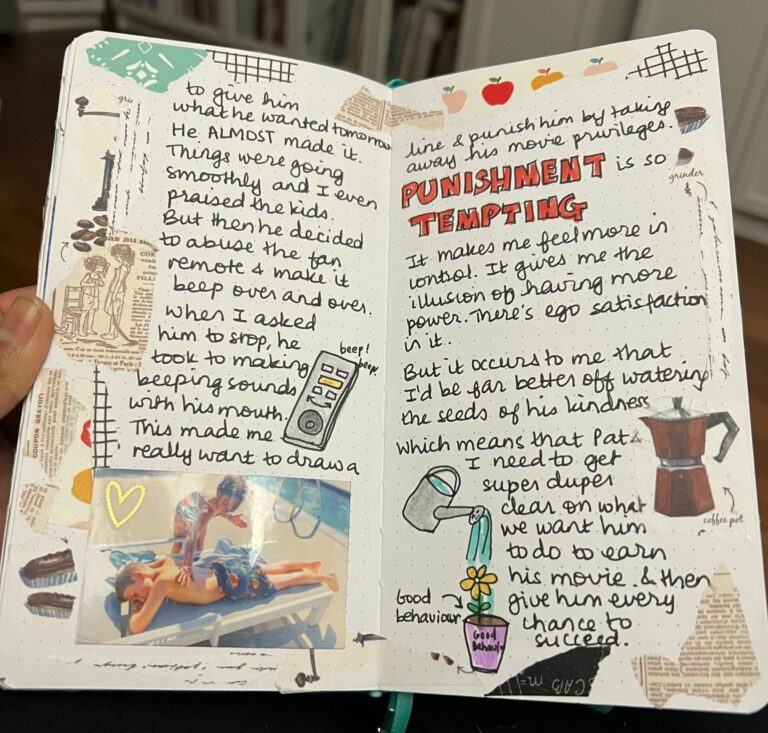
Having a place to actually use photos made me more likely to take them. In order to have good photos to take, I was motivated to get creative about outings and angles and it led to lots of extra fun in real life.
Documenting my life this way – examining the images as well as writing about the experiences we had – made my life feel special during a time when many freedoms were taken away. I watched a YouTube video by an artist called Dyan Reaveley where she reminded me that we were living through a historical event. Decades from now, people will be fascinated by our diaries and experiences the way we’re fascinated by the diaries of folks who lived through events like the Great Depression, etc.
I would often write about a day where we never left the house as if it was a travel journal. I played with style and observed little details and documented the hilarious things my kids said and did.
Capturing memories like this made me more present and helped me enjoy what we could do instead of focusing on all the canceled trips and conferences and playdates. It made me fall in love with the details of my life and it’s super fun to re-visit.
- Simple process journaling:
I borrowed the concept of process journaling from the brilliant Writing As a Way of Healing by Louise Desalvo. I needed a simplified way to make sure I was always capturing my learning, so I created this series of three powerful questions that are all but guaranteed to lead to insight when used with curiosity and relaxed awareness. You can download my prompts for free by clicking this link.
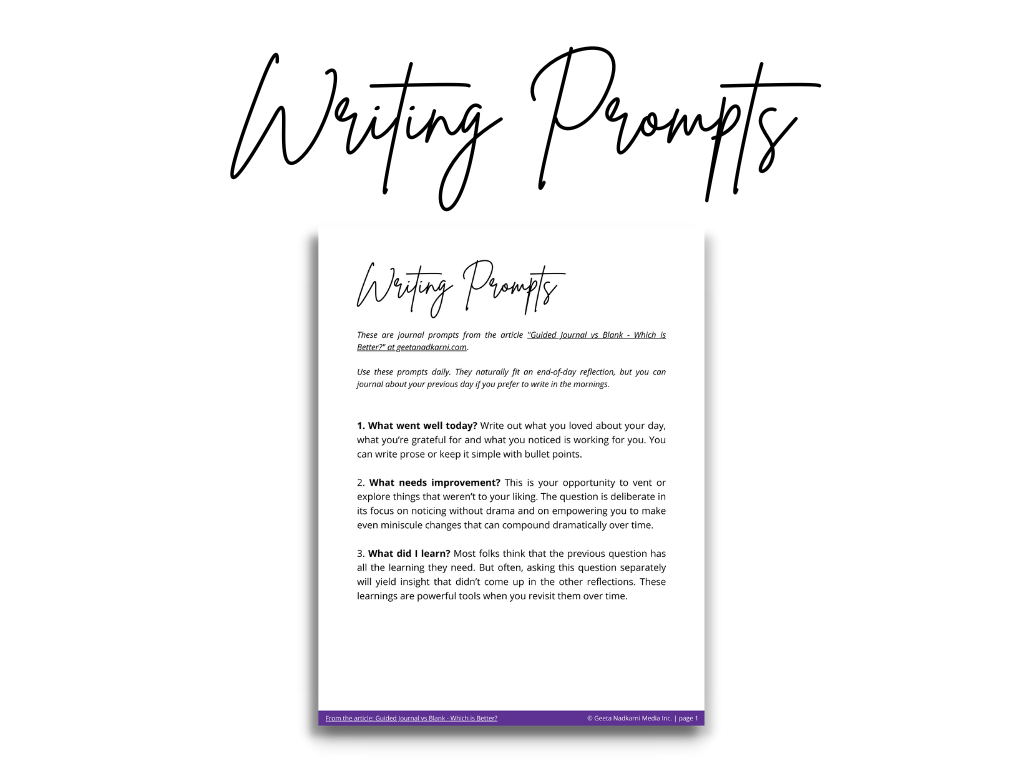
Featured Free Download:
Transform your blank journal into a productive guided one using my simple daily 3-prompt system.
